Foaming skills | how to find the right angle of the steam stick and how to deal with the dense foam?
Recently, it has been found that many enthusiasts and newcomers are still more concerned about the problem of foam, so I will summarize my personal experience for some of them.
It is recommended to use whole milk with a fat content of 3.2-3.8%. This time, Weiji fresh milk is used as a reference.
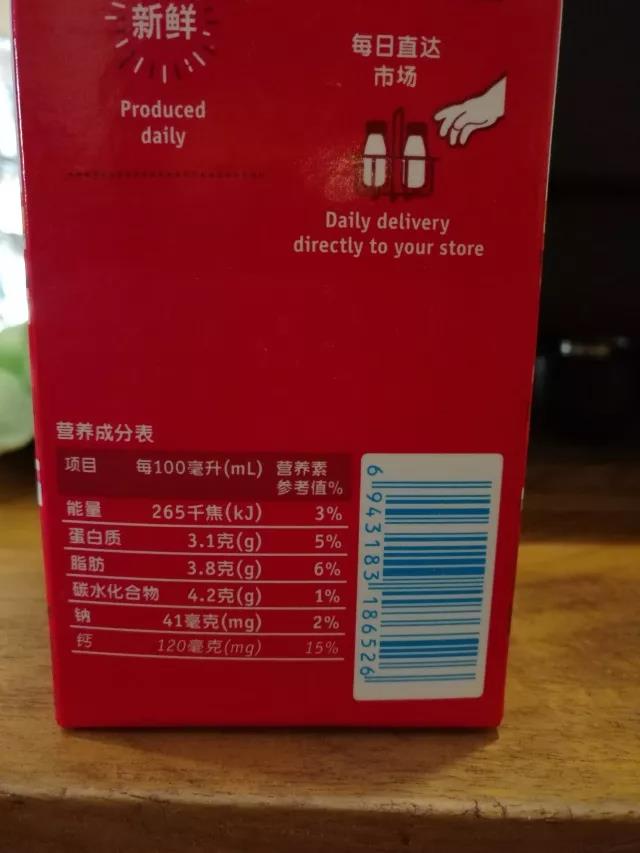
If the temperature is too high, the taste is not good, and it will destroy the milk molecules and cause flavor loss, protein coagulation, poor fluidity, etc., low temperature (the premise is dense enough) the protein is not completely decomposed, the touch is not good.
It is not recommended to use a thermometer when foaming, this will affect the process of beating and beating, and long-term habits will certainly be cumbersome.
Try to measure the temperature by hand, pay attention to the sound changes in the heating process can also be predicted, the higher the temperature, the more sharp the sound will become, the practice needs to be repeatedly confirmed and accumulated experience.
"vortex problem"
The function of the vortex is to pull the coarse foam below the liquid surface through the vortex to make the surface clean. There are many states of a vortex, each of which needs to be observed and remembered. To put it simply, if you want to have a vortex, the sprinkler of the steam pipe should not be too deep under the milk surface, about 0.5-1cm.
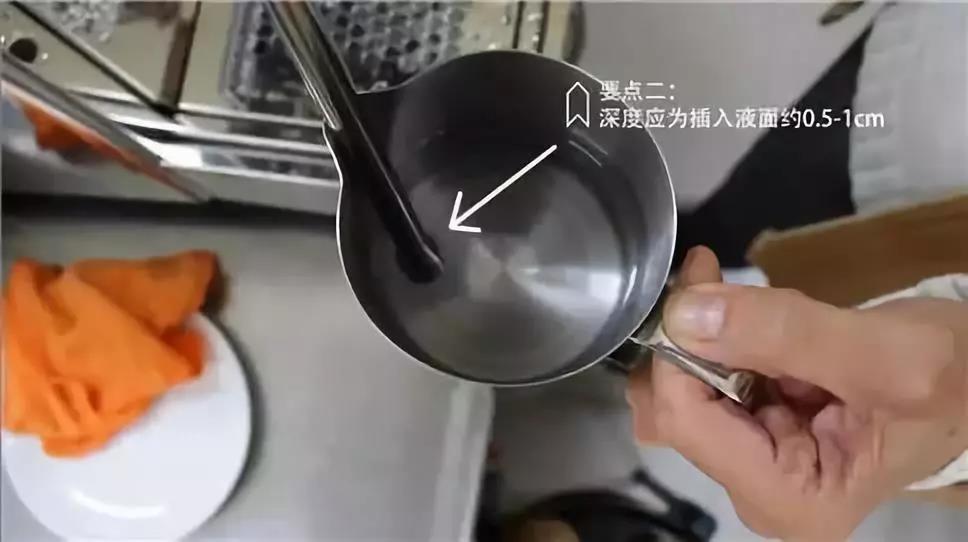
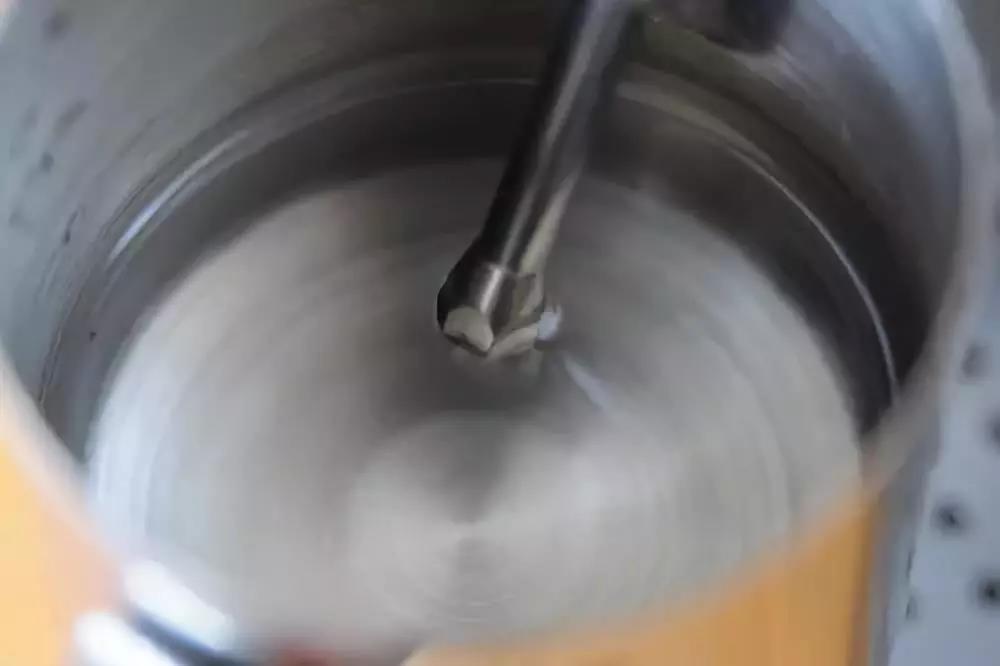
"Angle problem"
The sprinkler is in good contact with the milk, that is, open the steam valve, and the vat moves down very slowly, and you will hear the steam of "eating"shearing" with the milk (about the shear force, when we discuss the principle of milk foaming later, talk slowly!) The sound made is commonly known as "the sound of air intake". The sound of air intake to human body temperature can no longer appear, otherwise, there will be a lot of coarse foam on the surface.
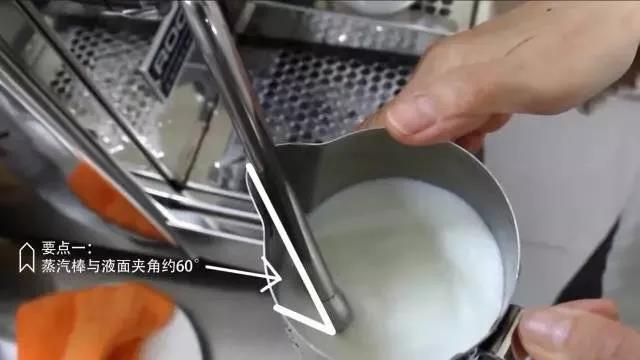
At this point, move the flower jar up a little bit (just a little bit, which is important, which is understood by many people as moving up continuously, which is very wrong), and let the steam sprinkler leave the cutting surface so that the sound of "eating" can not be heard. At this point, by adjusting the angle of the vat, remember that it is the angle, not the position of the sprinkler and the surface (very small angle adjustment), find the vortex, pull the coarse foam off the surface in the foaming stage, and continue until the temperature reaches the hot temperature.
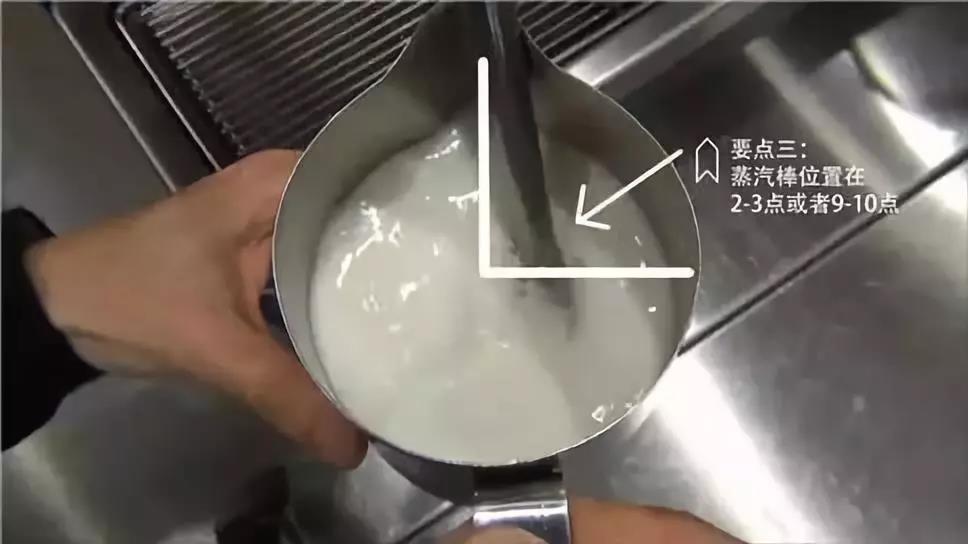
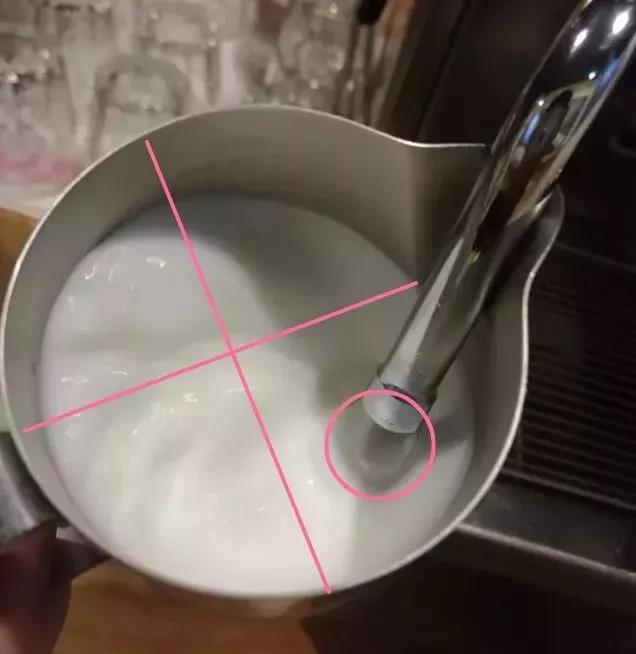
"Steam quantity problem"
Some materials are often described like this: when making milk foam, as soon as the nozzle touches the milk noodles, it will all open the steam valve. I don't quite agree with this (except for the two-stage steam valve, because there is no way to operate the steam volume, here I refer to the mainstream knob steam valve). In fact, this view is not too big a problem, but as a beginner, the weight of the opponent is not controlled, the valve button is often screwed. Even for coffee lovers, I think it is best not to use this guiding ideology to operate steam valves.
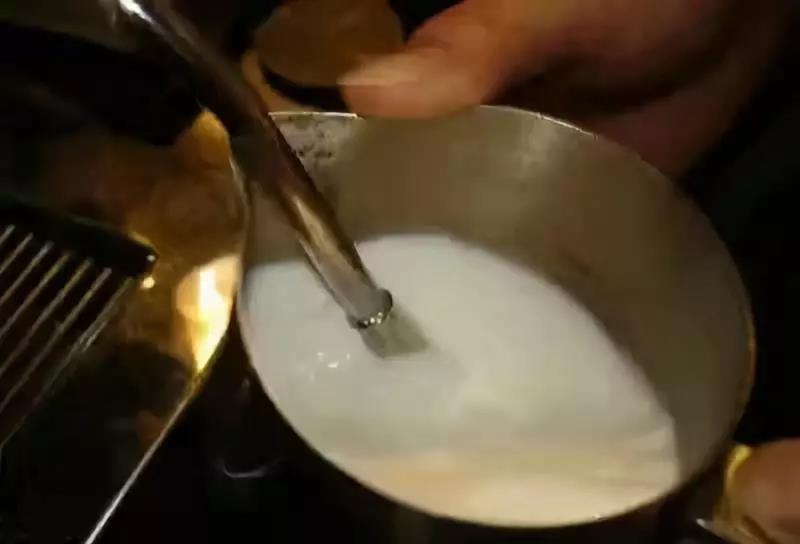
When we open the steam valve, no matter how much it is opened, the pressure will not change, only the outgassing volume will change. I suggest that you only need to open the valve to the range where you can foam normally. There is no need to fully open it (usually just twist three or four times).
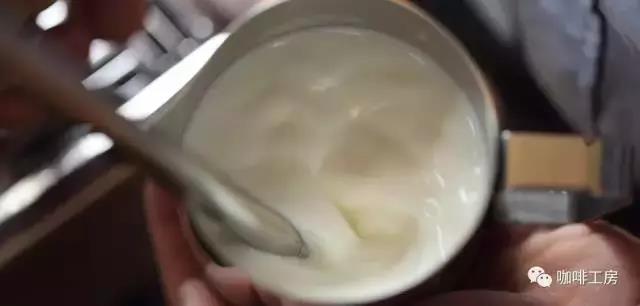
Don't inhale in the middle and later period, otherwise there will be coarse bubbles that can't be eliminated.
"screaming problem."
Milk does not foaming this process, or the amount of foaming is very small, it will produce a pig-like scream. The direct reason is that the sprinkler is too deep below the surface of the milk (you will hear it when you clean the nozzle every day). The way to avoid it is to move the flower jar down so that the sprinkler does not go too deep into the surface of the milk, and the sound immediately disappears, in exchange for the "eating" sound we want to hear.
[air intake]: turn on the steam to start air intake and observe the surface of the milk. if the milk rotates and does not hear the sound of nourishment, it means that the air has not been breathed, and then you need to lower the milk tank a little bit and expose the nozzle for air intake. When you hear the sound of nourishing air, stop lowering the milk tank and keep it in place. At this time to observe the state of milk movement, the normal situation should be to enter the air while the liquid rotates, forming a whirlpool.
"Steam control force problem"
That is, no matter how much air pressure is used (in the allowable range of the boiler, personal understanding: 0.8-1.2bar), it can produce very good quality milk foam. Performance of quality in place: use 600ml medium-sized flower jar (old-fashioned), hit a jar full of milk foam, you can make WBC standard two cups of foam thickness in 1cm cappuccino.
Dense milk foam is that the surface can reflect light, there will be no coarse foam, and when the amount of milk is the same, no matter 60% full or 70%, 80%, 90% or full, the temperature is the same, and the number of milk bubbles cannot be adjusted by the temperature.
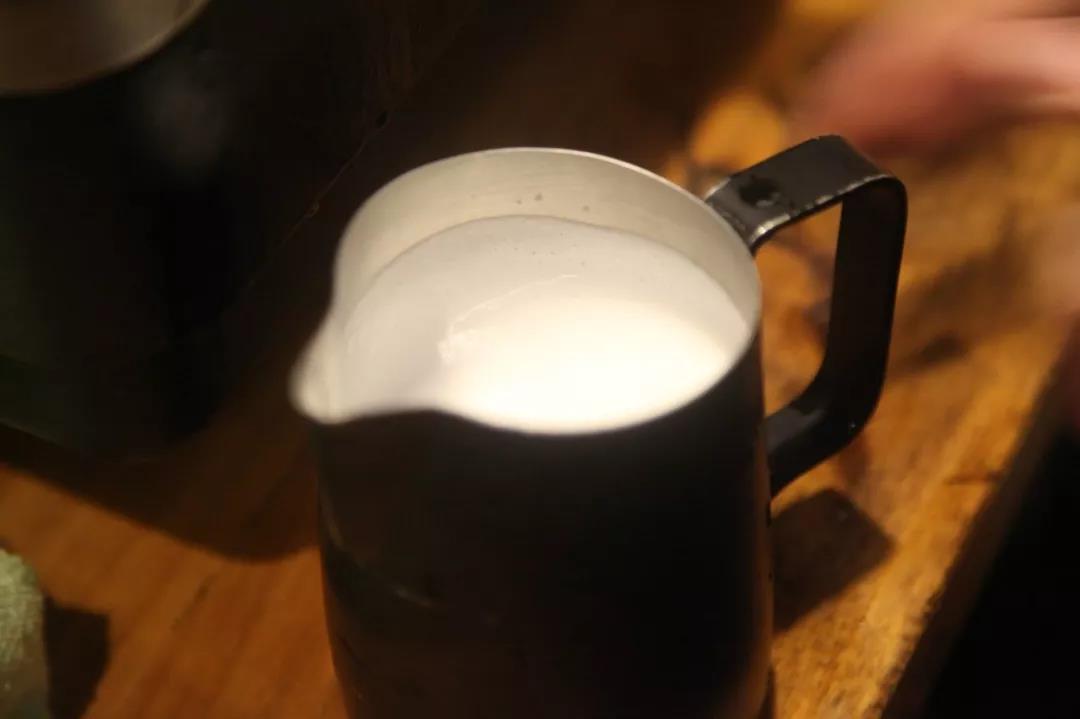
If you want to make delicate foam, dry steam is very important. What does dry steam look like? If it is moist steam, you can find obvious water with a cup, and the sound of the steam will have a lot of "puff" hot water sound, or spattered hot water droplets mixed in the steam. On the contrary, dry steam, take the cup to pick up, there will be no water left at the bottom.
Dry steam sticks will heat faster than wet ones, and milk will not be diluted.
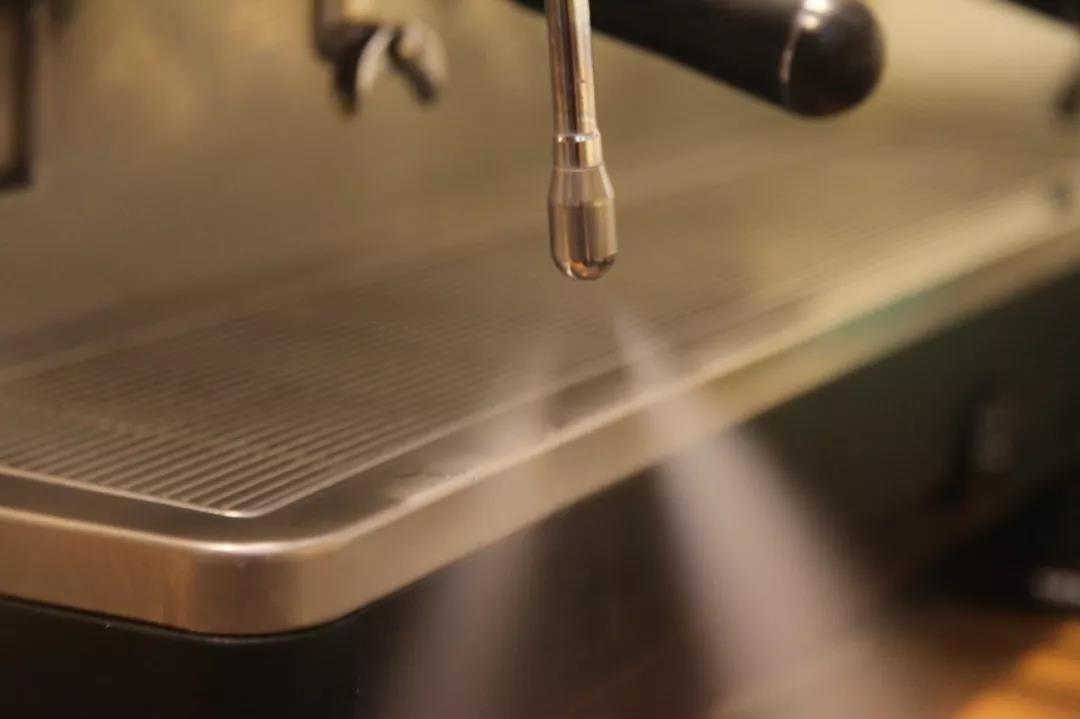
"the problem of milk foam control"
There are several criteria for beating milk foam, one of which is to hit as many milk bubbles as you want; if you want to hit seven points, you will never hit nine points; to make a cup of product, you will never hit two cups of milk foam; each time the cappuccino made must be consistent in terms of foam quality.
"the last key: the treatment of milk foam."
After the milk is dismissed, it is not the ideal foam, but in a layered state. The lower layer is the heated milk, and the upper layer is the "foam" after the milk is dismissed, so we have to deal with the milk after discarding. Shake up and down to remove the coarse foam from the surface; shake so that the hot milk is fully mixed with the upper foam to form foam. It can also be achieved by inverting back and forth between two flower vats (this action must be gentle). This step is very critical, some friends do not attach great importance to this point, then all previous efforts will be wasted.
How to solve the problem of layered foam:
1. Put the pull vat containing milk bubbles vertically and collide with the table, so that the big milk bubbles will burst into small ones. After the big milk bubbles are burst, shake the flower jar horizontally and let the foam rotate and collide, which will also eliminate some large milk bubbles. The dense milk bubbles are as smooth and shiny as the mirror.
2. Use a spoon to scrape off a large layer of milk foam above the foam, leaving the dense foam below.
3. Pour the flower jar containing milk foam into another flower jar.
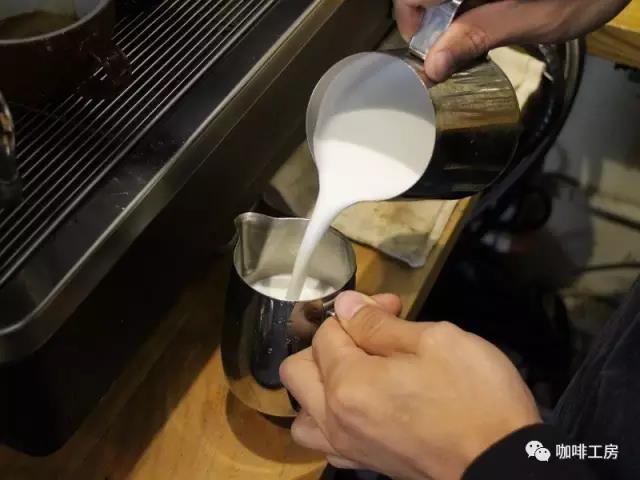
"the standard of good milk foam."
The first standard is that the surface should be reflective. Delicate, velvet-like, slippery.
The second criterion is that there is no coarse foam on the surface. This requires a lot of foam control ability, of course, this is also the premise of reflection. Those larger than the diameter 1mm are called coarse foam.
The third standard is: in the case of the same amount of milk (all added to the position at the bottom of the cylinder mouth), whether it is 60% full or 70%, 80%, 90% or full, the temperature should be the same.
Here, there is a topic about cappuccino, that is, the classification of cappuccino. Cappuccino is classified into three categories according to the quality of milk foam, one is wet cappuccino, one is dry cappuccino, and the other is half cappuccino in between. So how do we distinguish between these three kinds of cappuccino? If the foam technology passes, the quality of the foam can be used to distinguish it.
The process is as follows: 600ml (medium) pull the flower jar around, and fill the milk at the bottom of the cylinder mouth.
1, wet cappuccino milk foam is 6 or 7% full; this milk bubble to do leaves and other lines require more pattern is very good-looking, at the same time, this milk bubble can also be used to do latte.
2. Dry cappuccino is full of milk foam.
3. Half cappuccino milk foam is 80% full; I prefer 90% milk foam. This foam is great for heart, apple and tulip patterns. In fact, what we usually use most is this kind of milk foam, which is used to make the cappuccino that is common in our daily work.
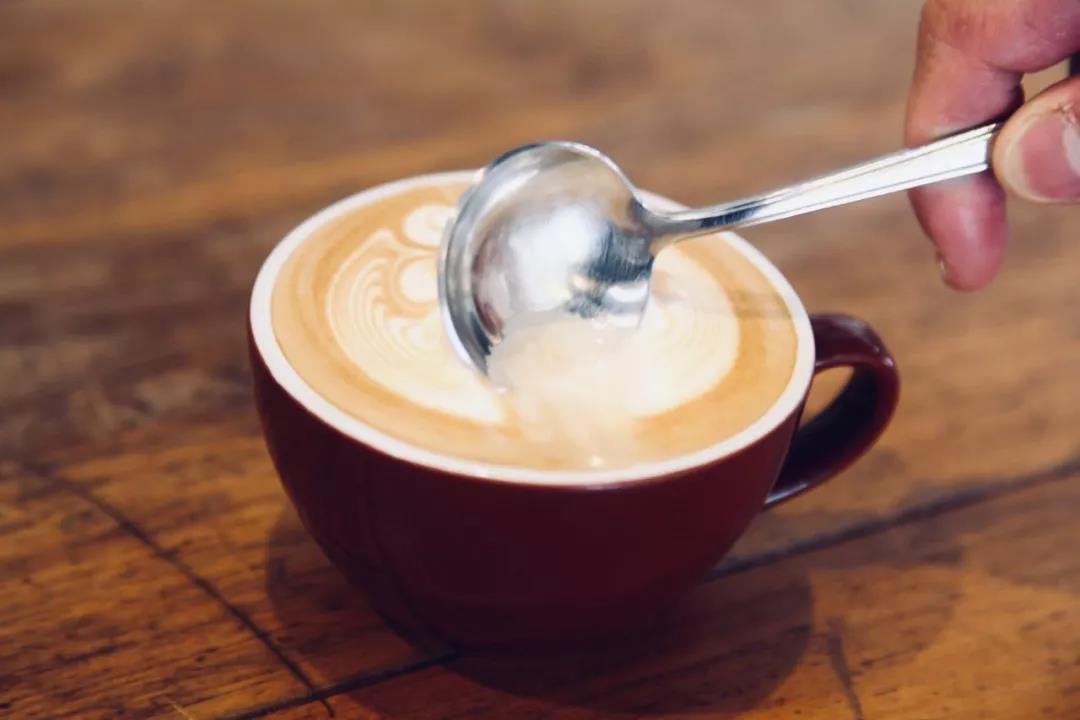
Important Notice :
前街咖啡 FrontStreet Coffee has moved to new addredd:
FrontStreet Coffee Address: 315,Donghua East Road,GuangZhou
Tel:020 38364473
- Prev
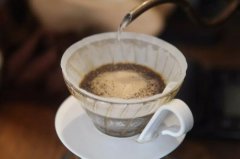
Coffee brewing techniques| Three-stage extraction and stirring method| How do you make coffee?
We have talked about the equipment for making coffee, the storage method of beans, etc., and now we begin to enter the most important step, coffee! Generally speaking, there are two kinds of brewing techniques that we often see: three-stage water injection method and stirring method. Now let's take a look at what's different between these two methods. How exactly is it used? The three-stage water injection method is our most common method.
- Next
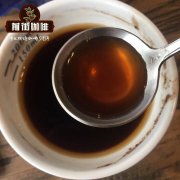
Water-washed coffee what are the characteristics of washing coffee beans?
Professional coffee knowledge exchange more coffee bean information Please pay attention to the coffee shop (Wechat official account cafe_style) when buying coffee, have you ever paid attention to the treatment of coffee beans? If you are drinking coffee in this way, you must not know how to taste coffee. You might as well order a cup of fine coffee next time, look at the producing area and treatment of these coffee, listen to the barista's explanation, and taste it carefully.
Related
- What is the meaning of lactic acid fermentation with coffee bean treatment?
- How to judge the state of foam by sound?
- How does the latte pull out the unicorn pattern? Come to get for a little trick to improve the flower pull!
- Will flower pulling affect the taste of the latte?
- Do you know the history of coffee?
- The difference between honey treatment and sun washing what is raisin honey treatment?
- What kind of milk can a novice use to make coffee foam to keep the foam longer? The correct method and skills of milking tutorial sharing
- Why do washed coffee beans taste sour? Flavor characteristics of washed Coffee
- Introduction to the skill of how to practice the size and height of water injection around the circle of hand-brewed coffee
- How do beginners practice coffee flower drawing from scratch?

